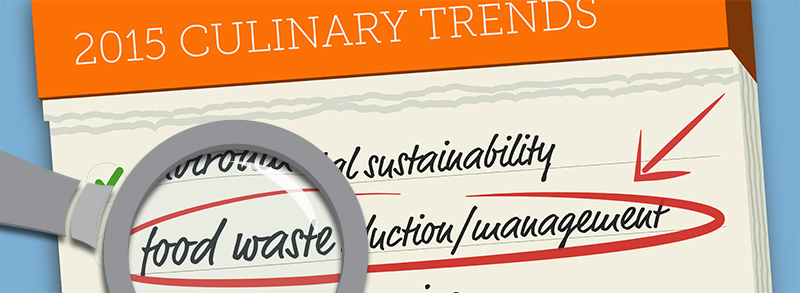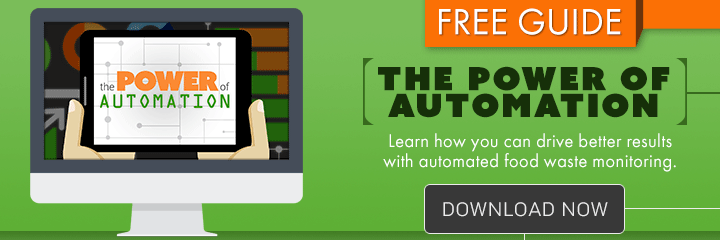
We’ve shared with our readers that “food waste management” is one of the top 10 culinary trends for 2015 according to the National Restaurant Association (NRA) report, but as a category this is a pretty broad topic. So what do we expect to see people doing differently in 2015 as it relates to food waste management? In this month's focus article, I delve deeper into four specific trends that we are already seeing emerge across the industry, and which I believe will gain steam throughout the year.
Trend #1: Increasing regulation against food waste in landfill waste streams
Massachusetts, Connecticut and Vermont were the early adopters of state legislation, with California following in the fall of 2014 and Rhode Island on the cusp of legislative change. We have also observed municipal entities regulating food waste including Seattle, San Francisco and Austin. The bottom line for operators is that food waste will soon be something that’s banned from garbage cans in many parts of the U.S.Trend #2: Food prices are high, placing pressure on operators to find efficiencies
With falling oil prices there may be some reprieve on food prices in the near term, but the long-term structural outlook suggests high food prices will be here to stay. This is supported by data from the latest National Restaurant Association report, which shows a 5.5 percent increase in wholesale food prices in 2014. We cannot continue to throw profits in the garbage—we must get more efficient with the food we buy.Trend #3: Measurement
The NRA reported that 75% of operators track food waste at some level. While there are certainly varying levels of rigor and consistency in these efforts, this data point shines the light on the importance of data to foodservice operators. Globally, the World Resources Institute is in the process of creating a global standard for reporting food waste and loss so that nations, states, cities, and companies will be able to compare data. People now understand that data assists in several ways:
- It drives behavior change.
- It enables monitoring of progress and backsliding.
- It identifies opportunities for improvement.
- It generally moves invisible items into full view.
Trend #4: Food Recovery
There are many efforts underway to recover edible food that would otherwise go to waste, with apps like Zero Percent, sites like Cropmobster and organizations like Food Recovery Network on college campuses all working to improve infrastructure and connectivity between donors and service organizations. There will be greater pressure on operators in the future to develop a strong food recovery strategy for all edible food. Operators will not be able to hide behind broad “liability” concerns. Federal legislation protects operators who donate food in good faith and customers will increasingly expect this as part of a sustainable restaurant experience.
Which of these trends is your operation pursuing in 2015 as part of your food waste management strategy? We’d love to hear your thoughts and share your ideas and best practices with the LeanPath Community--let us know in the comments below!
Portions of this article excerpted from the Foodservice Equipment & Supplies article with contributor Andrew Shakman, Building Your Foodservice Business: Three Points to Ponder for 2015.
